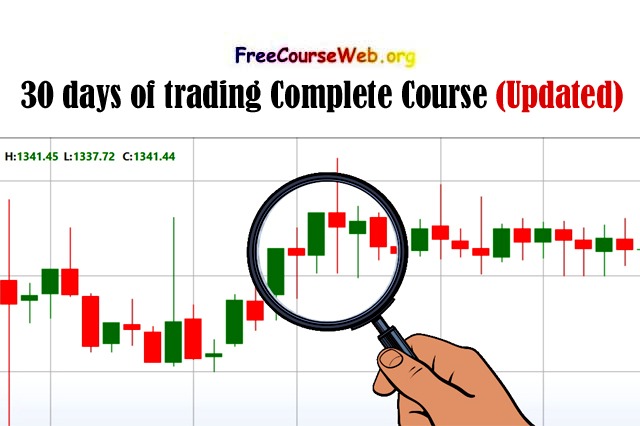Forex Trading An advanced swing trading strategy in Forex, centered around price action, involves a nuanced approach to market analysis and strategic decision-making.

Forex Trading Price Action
Candlestick Patterns To Master Forex Trading Price Action
How to Increase Website Traffic using SEO
The foundational element is the identification of key support and resistance levels. These levels are drawn on higher time frames, typically daily and weekly charts, providing a broader perspective on significant price zones.
Understanding market structure is equally crucial, encompassing trend identification and analysis of major price swings. This analysis aids in determining whether the market is currently in an uptrend, downtrend, or a ranging environment.
Candlestick patterns become pivotal in this strategy, acting as the entry and exit signals. Traders focus on reversal patterns such as Engulfing, Hammers, Shooting Stars, and Dojis, particularly when they manifest near established support or resistance zones.
The integration of Fibonacci retracement and extension levels enhances the strategy’s precision, identifying potential reversal or continuation zones. Seeking confluence between Fibonacci levels and key support/resistance areas strengthens the strategy’s reliability.
In addition to static support and resistance, dynamic elements are introduced through trendline analysis. Drawing trendlines helps identify dynamic support and resistance levels, and breaks in these trendlines can serve as potential signals for entry or exit.
Multiple time frame analysis is a complementary aspect, aligning the direction of the trade with the higher time frame trend for a more comprehensive outlook.
Forex Trading Price Action
Oscillators like the Relative Strength Index (RSI) and Stochastic Oscillator contribute to the strategy by identifying overbought or oversold conditions.
Traders pay attention to divergence or convergence between the oscillator and price for added confirmation before executing trades. Risk management remains a cornerstone, with traders setting a risk-reward ratio of at least 1:2 or better, placing stop-loss orders strategically below or above key support/resistance levels, and adjusting position size based on currency pair volatility.
Acknowledging the impact of news and economic events is crucial. Traders need to be aware of major economic releases that could significantly influence the currency pair and exercise caution during high-impact news periods unless their strategy accounts for such volatility.
Finally, a commitment to regular review and adaptation is essential. The dynamic nature of the forex market requires traders to reassess and adapt their strategies based on changing market conditions. Maintaining a trading journal to analyze both successful and unsuccessful trades contributes to continuous improvement and learning.
In a practical scenario, an uptrend on the daily chart may prompt a trader to identify a strong support zone using horizontal levels and trendlines.
Waiting for a reversal candlestick pattern, like a Hammer or Bullish Engulfing, near this support zone becomes the entry signal. Confirmation from oscillators, such as oversold conditions on RSI or Stochastic Oscillator, further solidifies the decision.
The trade is then executed with a carefully placed stop-loss below the support zone and a target based on the predetermined risk-reward ratio. Continuous monitoring and adjustments are made as the trade progresses, adhering to the principles of the strategy.
The learning objectives outlined suggest a comprehensive journey towards mastering trading strategies in the forex market. Let’s break down the key components:
Profitable Trading Strategy:
Participants will gain a thorough understanding of a profitable trading strategy. This involves learning not just about individual indicators but comprehending how these elements interact to form a cohesive and effective strategy.
Chart Patterns:
In-depth knowledge of chart patterns is emphasized, indicating a focus on visualizing and interpreting price action through patterns. This includes the recognition and interpretation of common patterns like triangles, flags, and head-and-shoulders formations.
Time Frame Selection:
Understanding how to choose the perfect time frame is crucial. Different time frames reveal different aspects of market dynamics, and selecting the appropriate one aligns with the strategy’s objectives.
Technical Analysis Tools:
Participants will learn about the most popular and effective tools of technical analysis. This includes indicators such as moving averages, oscillators, and trendlines, empowering traders to make informed decisions based on price movements.
Logical Price Movement Analysis:
A focus on analyzing price movements in a logical way implies understanding the rationale behind market movements. This involves connecting the dots between market news, economic events, and chart patterns to decipher the driving forces behind price changes.
Supply and Demand Levels:
Recognition of key supply and demand levels is crucial for identifying potential turning points in the market. This involves understanding where institutional traders may enter or exit positions.
Trend Analysis:
Analyze trends using a solid setup. This likely involves understanding the characteristics of trends, recognizing trend reversals, and identifying opportunities within existing trends.
Order Placement:
Participants will learn how to place different orders in the forex market, understanding the nuances of market orders, limit orders, and stop orders.
Money Management:
In-depth coverage of money management is indicated, including the understanding of both fixed percentage (1% Money Management) and variable percentage (Kelly Criterion) approaches. This ensures participants grasp the importance of risk management in trading.
Profit Percentage and Drawdown:
Recognition of a good profit percentage and understanding drawdown is essential. This involves setting realistic expectations and managing potential losses effectively.
Candlestick Chart Reading:
The ability to read candlestick charts is a fundamental skill. Traders will likely learn to interpret various candlestick patterns and use them for decision-making.
Moving Averages:
Understanding how moving averages work is emphasized. This includes using them for trend identification, spotting potential reversals, and generating trading signals.
Trading Concepts: Rejection and Breakout:
Trading using the concepts of rejection and breakout indicates a focus on understanding market psychology. Traders will learn to interpret rejection at certain levels and identify breakout opportunities.
In summary, the outlined learning objectives cover a broad spectrum of skills and knowledge necessary for successful forex trading. Participants are expected to develop a holistic understanding of technical analysis, risk management, and strategic decision-making in the dynamic forex market.





















